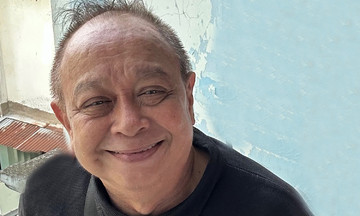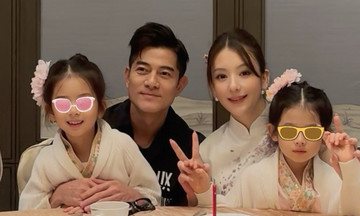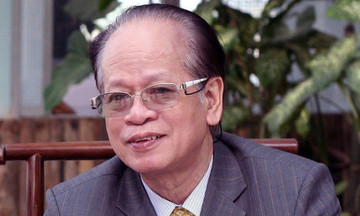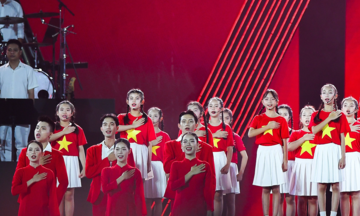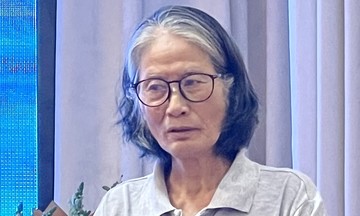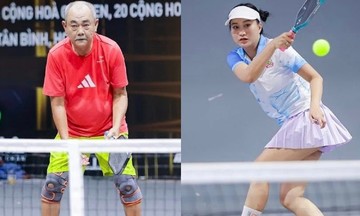"Mua do" ("Red Rain"), a film about the 1972 battle to defend the Quang Tri Citadel, is a box office hit, surpassing 552 billion VND in 17 days. Many details of the film have captured the audience's attention, including the final scene featuring a photo of smiling soldiers displayed in a museum alongside artifacts of soldiers who died in the battle. The image has resonated deeply with viewers.
In the photo, soldiers wearing conical hats, holding their rifles, smile amidst the ruins. Despite the fierce fighting, they maintain optimism and faith in victory. A post featuring the photo on a journalist's fanpage received over 27,000 interactions. In the comments, many expressed gratitude to the previous generation who sacrificed their youth on the battlefield, contributing to the nation's independence.
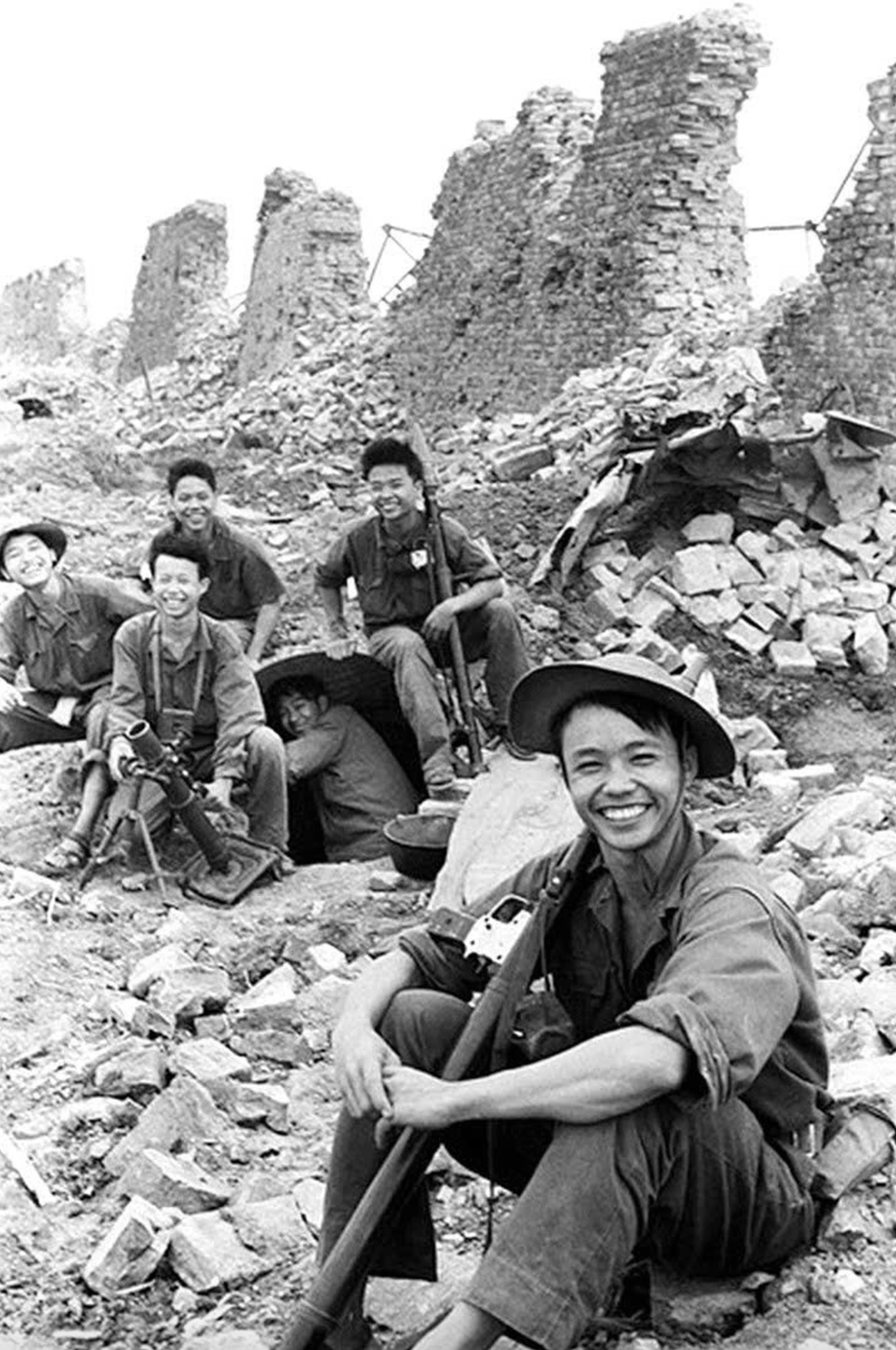 |
The photo that has gone viral following the release of "Mua do" ("Red Rain"). The work was awarded the State Prize for Literature and Arts in the field of Photography in 2007. Photo: Doan Cong Tinh |
The photo that has gone viral following the release of "Mua do" ("Red Rain"). The work was awarded the State Prize for Literature and Arts in the field of Photography in 2007. Photo: Doan Cong Tinh
The photo was taken by journalist Doan Cong Tinh on the morning of 15/8/1972, during intense fighting. The photo, titled "Victorious Smiles at the Quang Tri Citadel", was published in the Nhan Dan newspaper on 2/9/1972.
The soldier sitting closest to the camera is Le Xuan Chinh, who was 19 at the time. 53 years later, with renewed interest in the photo, the veteran expressed pride and emotion. Chinh, currently residing in Dien Bien, hasn't seen "Mua do" ("Red Rain") but is pleased the film crew used the photo as a tribute to his comrades.
The veteran recounted that on 15/8/1972, he was assigned by the Regimental Command to guide journalist Doan Cong Tinh, from the Quan Doi Nhan Dan newspaper, across the river into the Citadel. When the journalist asked to take a photo, Le Xuan Chinh and his comrades were enthusiastic. He thought that if the photo was published, his and his comrades' parents might recognize them and know they were still alive. So, when Tinh asked everyone to smile, they happily obliged.
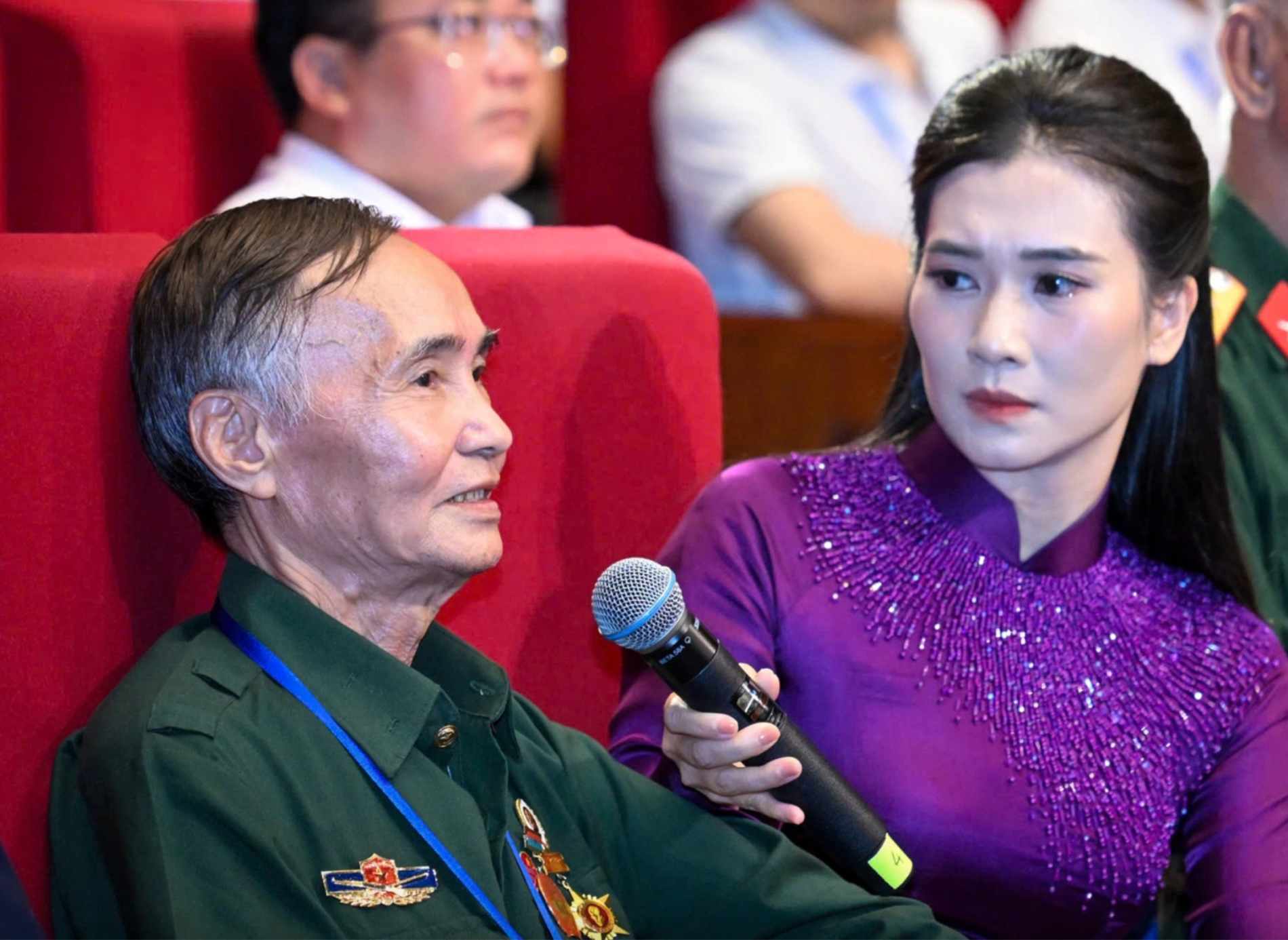 |
Veteran Le Xuan Chinh at an event in Hanoi in July. Photo: Viet Trung |
Veteran Le Xuan Chinh at an event in Hanoi in July. Photo: Viet Trung
Journalist Doan Cong Tinh vividly remembers taking the photo. At a post east of the Thach Han River, he saw a group of soldiers chatting during a rare lull in the battle. He was inspired to capture their optimism in a place where the line between life and death was thin. He told everyone to act naturally, with Le Xuan Chinh positioned closest to the lens.
After the war, Doan Cong Tinh tried to find Le Xuan Chinh but was told he had died. Almost 30 years later, they reunited at the 50th anniversary of the Dien Bien Phu victory in Dien Bien.
According to director Dang Thai Huyen, many scenes in the film were inspired by war correspondents' materials. Doan Cong Tinh's work deeply moved the film crew. Its inclusion at the end of the film serves as a tribute to wartime journalists and the soldiers who were "determined to die so the Fatherland could live".
Le Xuan Chinh, born in 1954, hailed from Thai Phuong commune, Hung Ha district, Thai Binh province (formerly). In 1971, the resistance war against the Americans entered a fierce stage. As an only child, he wasn't obligated to enlist, but he volunteered. In June 1972, he joined the 18th Communications Company of the 48th Regiment, 320B Division. He endured 70 of the 81 days and nights of the Quang Tri Citadel battle. On the afternoon of 5/9/1972, while carrying documents from the Regimental Command to Ai Tu, he was hit by artillery fire. His comrades transferred him to Field Hospital 112 in Loc Thuy commune, Le Thuy district, Quang Binh province (formerly).
Journalist and photojournalist Doan Cong Tinh, born in 1943 in Nam Dinh, was a reporter for the Quan Doi Nhan Dan newspaper. He is a member of the Vietnam Journalists Association, Ho Chi Minh City Photographers Association, Vietnam Association of Photographic Artists, and the Federation Internationale de l'Art Photographique. He has received numerous domestic and international photography awards for his wartime images, including "On the March," "On a Nameless Hill," and "Advancing Under the Military Flag".
Phuong Linh




